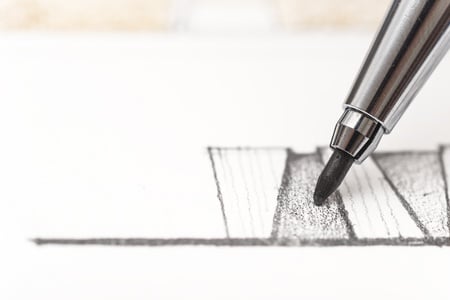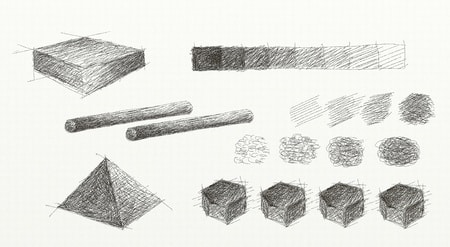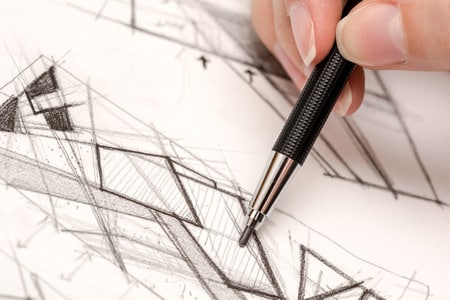When people look at drawings and remark at how realistic they look, it usually has everything to do with the shading.
Pencil shading requires the artist to consider every stroke, in order to properly recreate how light hits an object.
Read on for the five elements of shading which will help you create your most realistic drawing yet!

What is shading in art?
Drawings can only come to life if you have the one key component: shading.
With visual arts—especially pencil drawing—shading is very much necessary to bring depth to your work, adding dimension and defining where your subject is in relation to your light source.
It starts with value, which is the lightness or darkness of a color.
Shading refers to the darker values that, when combined with tints (lighter values), produce a more realistic masterpiece.
However, there are many elements of shading and techniques to learn first!
Elements of shading:
Cast shadow
The cast shadow is the darkest point on your drawing. It falls opposite the light source and represents where the object prevents the light from penetrating.
Shadow edge
This is where the object is turning away from you and is lighter than the cast shadow.

Halftone
This is the mid-gray of the object. It’s neither in direct light or shadow.
Reflected light
The reflected light is a light-gray tone. It’s found along the edge of an object and separates the cast shadow and shadow edge.
Full light
This area is stark white and shows where the light source is directly hitting the object.
When you understand how shading can affect how we perceive light to be drawn, your artworks will reach a stunning realism.
Types of shading techniques
Blending & Rendering
These are actually two techniques that work together to create our smooth finished product.
Blending uses different amounts of pressure to determine the values on your subject.
Use the medium itself or a blending tool to help you.
Then you can render the image to remove some of the density to create lighter areas. It’s a back-and-forth type of technique!
Hatching
There are several types of hatching that exist. (We’ll even go over another type in just a bit!)
This technique is when you simply let your lines travel together to create dimension.
Every time you put that pen or pencil to paper, keep the lines going in the same direction. The closer your lines get, the darker that area of the image will be.

Cross-hatching
Using the same lines as we did with hatching, cross-hatching is exactly what the name suggests: cross the lines.
The higher the density at which you are crossing the lines will determine the darker and lighter values.
Stippling
With stippling, your goal is to express the gradation of value with dots, dots, and more dots.
And just like with the other shading techniques, the density of your dots will dictate the value throughout your subject matter.
Interested in learning more?
Hunakai Studio of Fine Arts in Foxboro, Massachusetts offers art lessons and workshops to all skill levels.
Learn more about our studio workshops, kids art classes and drawing classes for adults and call us at 508-543-5665 today to learn more about enrolling!